2011 Porsche Cayenne S Hybrid Prototype, 2010 Cayenne Diesel
I’m in Ford Country, but not to drive one. Rather, Porsche Cars of North America has invited a small group of auto writers to Dearborn for sneak-peak of two future SUVs. One is a very rare and experimental (one of two) Cayenne S Hybrid prototypes, the other a Cayenne Diesel brought over from Denmark.
FAST FACTS
| 1. The Cayenne S Hybrid uses a 3.0L V6, electric motor and battery to make 374-hp and 405 ft-lbs of torque and can accelerate to 60 mph in 6.8 seconds. |
| 2. It is a full hybrid, meaning it can operate on gasoline power, electric power or a combination of both. |
| 3. The Cayenne hybrid can operate at up to 30 mph on pure electric power and can cruise at up to 85 mph on just electric power. |
| 4. The Cayenne Diesel, already on sale in Europe, makes 240-hp and 405 ft-lbs of torque from a 3.0L V6 turbo diesel. It can hit 60 mph in 8.3 seconds. |
| 5. Fuel economy for the Diesel is rated at 25 mpg, while the Hybrid achieves 26 mpg (both on the European driving cycle). |
Porsche has sold more than a quarter-million Cayennes globally since 2003; from the base V6 Cayenne all the way up to the insane Turbo S model.
The diesel has been on sale for some time now in other markets like Australia, Europe and South Africa where it fills a price gap between the V6-powered Cayenne and the V8-powered Cayenne S.
“The decision to offer a diesel was much debated in the beginning,” says Dr. Michael Leiters, project leader for Cayenne. Porsche owners have been asking for it, he says, and so here it is.
CAYENNE DIESEL DELIVERS V8 TOW RATING WITH IMPRESSIVE FUEL ECONOMY
The Cayenne Diesel looks nearly identical to its V6 petrol counterpart, however, it features a 240-hp 3.0-liter V6 turbo diesel engine with direct injection instead. It makes a sturdy 405 ft-lbs of torque at just 2000 rpm and relies on Porsche’s Tiptronic S six-speed transmission to put it down to all four drive wheels.
A 26-gallon fuel tank is said to afford a driving range over 620 miles. Based on the New European Driving Cycle (NEDC) standards, Leiters says this model gets 25 mpg on average. And, thanks to exhaust gas recirculation, oxidization catalyst and diesel particulate filter, achieves low emissions that easily meet the Euro 4 standard.
Pretty good for any 4,493-pound vehicle that’s also able to scoot from zero-to-62 mph in 8.3 seconds and reach a top speed of 133 mph when asked to. By comparison, the base Cayenne – which has a 3.6-liter V6 that makes 290-hp and 273 ft-lbs at 3000 rpm – covers the same distance just two-tenths-of-a-second faster. Though both models share the same 7,700-pound tow capacity rating, the diesel wins the torque battle hands down.
THERE’S NO DIESEL BADGE, FOR A REASON
On the road, it’s clearly identifiable as a Cayenne, however, there’s no diesel nomenclature anywhere to tip off the locals. Forget the fact the Europeans aren’t much for badges, no one really wants to show off that their Porsche is a lowly diesel.
Judging from my short stint at the wheel, however, the diesel factor is irrelevant, as ride quality is tops and the interior features and amenities are typical of this automaker.
There’s a slight delay in throttle response, but nothing too scary and the diesel gets up to speed as quickly as you want it to. Engine, wind and road noise are virtually non-existent, though stabbing at the throttle does provoke a toothy growl from the stainless dual exhaust.
The diesel gets Porsche’s permanent all-wheel drive system with electronic traction and stability controls as standard. An air suspension featuring self-leveling, ride-height control and Porsche Active Suspension Management (PASM) is available as an option.
Currently, only between one and three percent of all new vehicles sold in the U.S. run on diesel. Porsche says that timing and market conditions will dictate when and it releases the Cayenne diesel over here, and while some experts think diesel sales could reach 11 percent by 2015, we wouldn’t count on being able to get a Cayenne Diesel.
THE HYBRID ALTERNATIVE MORE LIKELY FOR NORTH AMERICA
America’s love affair with SUVs won’t end overnight and the U.S. is still the Cayenne’s biggest and most important market. That being said, we’re not surprised to learn that for 2011 Porsche has announced it wil bring a Cayenne S Hybrid to market.
Even though Ferdinand Porsche built the world’s first serial hybrid production car — the Lohner-Porsche Mixte — more than a century ago, hybrid vehicles are still very much niche products.
In his media address, Leiters points out this prototype vehicle is a full parallel hybrid and not a mild hybrid, which is what many other automakers presently offer. It is, however, still very much a work in progress.
Porsche’s hybrid system is similar to one Audi developed and tested on its Q7 a few years back Porsche has since confirmed a similar setup for the new 2011 Cayenne S Hybrid.
HYBRID DELIVERS V8 POWER AND ACCELERATION
In its present guise, the Cayenne S Hybrid uses a supercharged 3.0-liter Audi-based V6 with direct fuel injection toting 333-hp and 324 ft-lbs of torque. The hybrid unit, which consists of a three-phase 38-kilowatt synchronous electric motor and disengagement (or lock-up) clutch, is installed directly on the driveshaft, with the latter part facing the combustion engine, and allows the three traditional hybrid modes — gas-only, gas-electric and electric-only operation — via an eight-speed automatic transmission.
The 52-hp electric motor tethers to a 288-volt nickel metal hydride (NiMH) battery pack that completely fills the spare tire well under the rear cargo floor and helps recapture energy when using the brakes. Since the electric motor also serves as the alternator, it generates electricity for the battery under certain load conditions when in combustion mode.
Under specific driving conditions, this mechanical connection also enables the hybrid SUV to coast at freeway speeds up to 85 mph without the combustion engine being on, helping to deliver the greatest fuel savings. Porsche is looking at newer, more compact lithium ion power cells, but the vehicle already runs entirely on electric power at low speeds up to 30 mph — perfect for parking lots and rush hour gridlock.
The combustion engine and electric motor combine for a maximum system output of 374 hp and peak torque of 405 ft-lbs at 1500 rpm. Top speed is delivered in sixth gear with the upper two reserved for cruising at lower rpms and sailing under electric-power.
All that low-end grunt also means the hybrid SUV can sprint from zero-to-62 mph in 6.8 seconds with the throttle pinned, yet still have exceptional fuel economy (roughly 26 mpg average n the European cycle) and even meets both the Euro 5 and American ULEVII emissions standards.
No specific tow rating for the hybrid has been released, but Porsche says that it expects to be close to the V8, meaning that this Cayenne S Hybrid can do the job of the diesel, but with better acceleration and, of course, a hybrid badge complete with the image of social responsibility that it conveys.
Monitoring more than three times the data of a conventional ECU in real time, Porsche’s advanced hybrid manager computer controls the interaction between the system’s three main components — the combustion engine, electric motor and battery — to optimize fuel economy under all driving conditions.
That’s great and all, but what’s really important is that all this full parallel hybrid goodness be completely transparent to the driver and passengers. And, it is!
The air conditioning compressor, power steering pump as well as a two-stage oil pump are powered electrically by the hybrid unit and, thereby, greatly reduce parasitic loss. The latter is essential to accomplishing critical disengagement, engagement and gearshift processes within inside the tranny when driving with the combustion engine turned off.
The prototype SUV is plenty powerful too. Thanks to careful control of the lock-up clutch and the automatic transmission’s torque converter, the V6 firing up or shutting down is virtually imperceptible when driving around town. Transitions are smooth and quiet despite the fact it takes just 300 milliseconds for the V6 to spontaneously fire up at the correct engine speed when the driver stabs at the right pedal.
Everything inside and outside the vehicle is status quo when it comes to features, accessories and Porsche quality. There’s a hybrid battery monitor on the right side of the instrument cluster and an information screen on the in-dash video display to keep tabs on the otherwise completely transparent system. I could do without the silly exterior vinyl graphics, the only obvious giveaway that this is a hybrid.
THE VERDICT
Hybrid technology will soon be part of Porsche’s overall plan to reduce its fleet fuel consumption and curb emissions. And you have to give the automaker credit for reigning in its popular gas guzzlers without ruining their outstanding performance.
The Cayenne S Hybrid combines the output of an eight-cylinder with four-cylinder fuel economy. Who doesn’t want that?
It won’t likely come cheap though. Like the Cayenne Diesel, Porsche will closely monitor North American market forces before choosing when and where to launch its new breed of hybrid luxury vehicles.
The Cayenne Diesel would make a lot of sense, despite its less-impressive acceleration, mostly because it generally operates like a Porsche and would no doubt be far less expensive than a hybrid. In North Ameican, however, the diesel name just doesn’t equate well with the Porsche brand identity, while hybrids do have a status that fits in well with high-tech, luxury vehicles. That being said, look for the “sexier” Cayenne S Hybrid later this year.
RELATED READING
More by Shaun Keenan















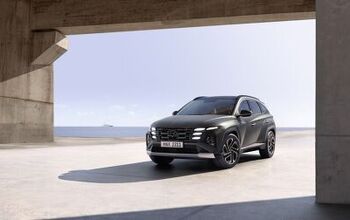
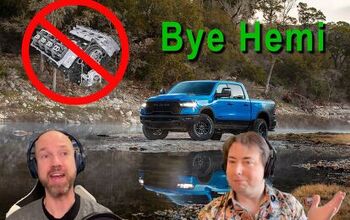
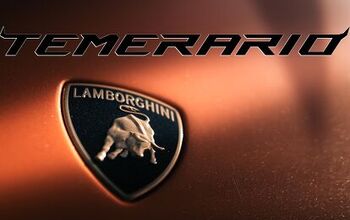
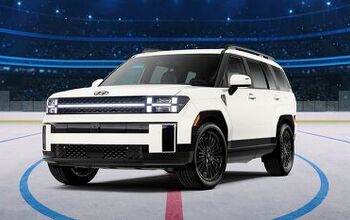


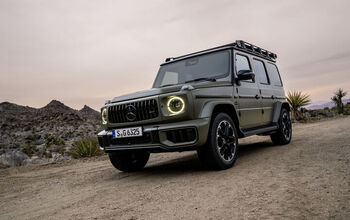
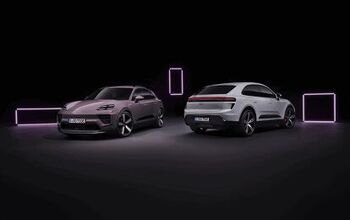

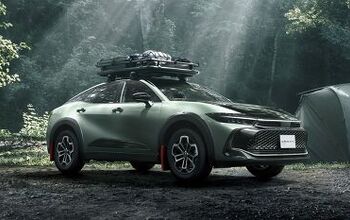
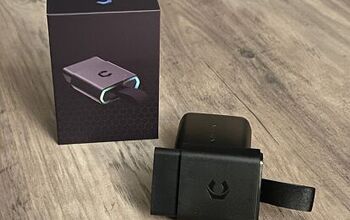
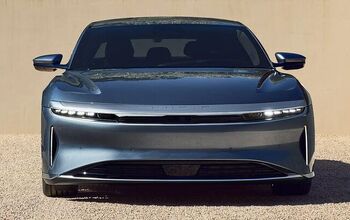
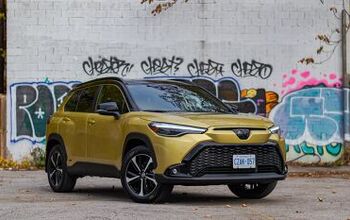
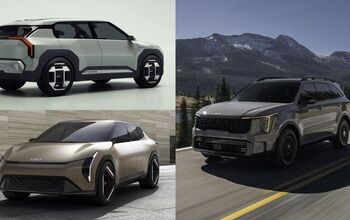


Comments
Join the conversation